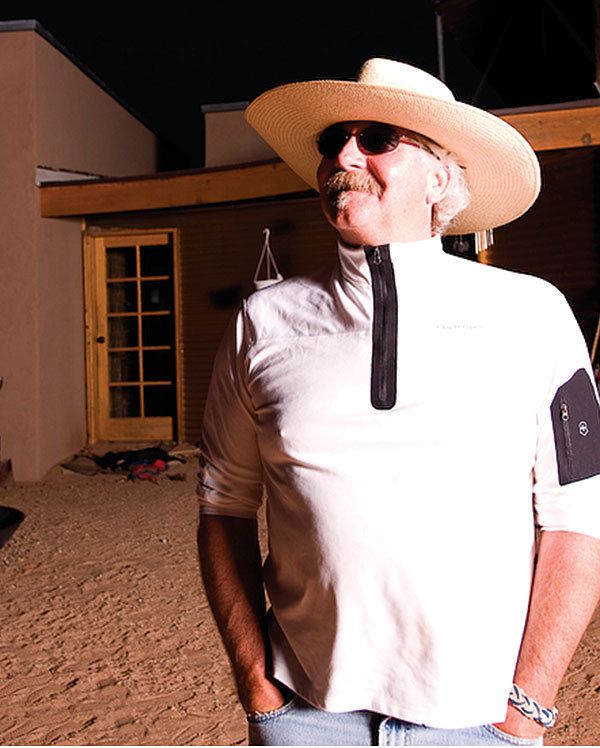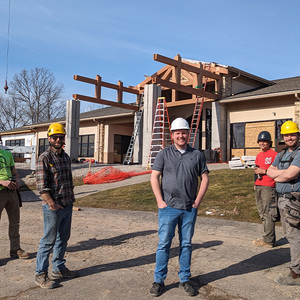Tailgate: Hank Louis, Teacher
Teacher On the Navajo Nation, the founder of a Utah design-build program is crafting sustainable homes and better architects.

What inspired DesignBuildBluff?
I saw what was going on at Auburn, and I visited Sam Mockbee and watched what he was doing at the Rural Studio, building inexpensive homes for poor people with architecture students as designers and builders. It took me two or three years of persuading my university, but I convinced them to let first-year architecture students build a house each year.
The first semester, they are in the classroom. They get studio, technology, and history credits. During the fall semester of design, we invite several Navajos to come in, medicine men and people like that, to teach the culture and the Navajo creation story. We then go down to Bluff, the city near the Navajo Nation we work with. The students get 15 credits for the semester of building the house.
We don’t come down to Bluff with a complete construction document. We come down with fairly decent schematics, and then work on the details. That’s the beauty of the design-build process.
What are you hoping to achieve?
It’s teaching students what it’s like to put a building together on site and have a civil, respectful dialogue with builders and tradespeople about what might be improved using their best experience, and then maybe coming up with a solution that’s never been done before.
What I’d like to see—and what’s beginning to happen—is that the students are bypassing the traditional route of indentured servitude of being an intern at a giant firm. A lot of them are beginning their own design-build firms.
In addition to that, I get feedback from the firms in Salt Lake City, where many of our students have gone, that our students are better architects—better able to solve problems quickly, with a much better handle on materials and things like that.
I always say that we’re trying to provide a place for chance to happen.
You carry the title of “philosophical leader” of DesignBuildBluff. What does that mean?
Philosophically, my belief is in building a better architect through empathy and compassion. The empathy evolved for all sorts of reasons—for the culture, for the people who are out there having to build what’s been drawn. The compassion centers on the people rather than just passion for architecture. I want the students to experience compassion. I want them to begin to understand that there’s a third-world country right at our back doorstep.
How have you used traditional Navajo practices in design and construction?
We want to build something that’s a piece of architecture that respects the Navajo culture and also respects the need for a comfortable interior.
The eastern entrance is the most important part. It’s the whole idea of greeting the sun at the start of the day. There are archicolors for four sacred mountains, and we have some part of the architecture deal with pointing at these four sacred mountains. There’s a clockwise circulation pattern that goes through a traditional hogan; we respect that in the circulation of the houses we build. None of our clients seem to be that adamant about anything except the eastern entrance, and they’re absolutely adamant about that.
What lessons are these houses teaching us?
We’re not really trying to teach people anywhere else how to build. I think it’s more about responsibility to your fellow human beings. You are aware if you’re able to pull yourself away from what’s irresponsible in building.
I’m not trying to judge people on what they’re doing, but I think everyone needs to take that responsibility and really concentrate on it. We know about the 40% of greenhouse gases that are coming from buildings. We just need to be more aware of that. The more people that are aware of it, the better off we’re all going to be.
There’s also the embodied energy of things that need to be brought in or transported in from other places. Instead, try to use natural and local materials. Everybody knows that intellectually, but emotionally, a lot of times it’s difficult to toe that line.
What do you see as the future of home building?
The future’s obviously going to be net-zero building. I don’t think we have any choice. In a nutshell, that’s it. I think it’s going to have to be net zero or a grid-tied system. I think it’s all moving in that direction.

























